How AI-Driven Smart Irrigation Systems Revolutionize Water Conservation and Sustainable Agriculture
How AI-Driven Smart Irrigation Systems Revolutionize Water Conservation and Sustainable Agriculture
Estimated reading time: 12 minutes
Key Takeaways
- Precision Watering: Smart irrigation uses AI and IoT sensors to deliver the exact amount of water plants need, precisely when they need it.
- Significant Water Savings: These systems can reduce agricultural water consumption by 20-60% compared to traditional methods, crucial for water conservation.
- Improved Yields & Quality: Optimal watering leads to healthier plants, reduced disease, less nutrient loss, and often results in higher crop yields (up to 30% increase) and better quality produce.
- Sustainable Agriculture Boost: They promote sustainability by saving water, reducing energy use for pumping, minimizing runoff pollution, and lowering the farm’s carbon footprint.
- Implementation involves assessment, selecting appropriate technology (sensors, controllers, AI), proper installation, and ongoing management, but offers strong ROI through reduced costs and increased revenue.
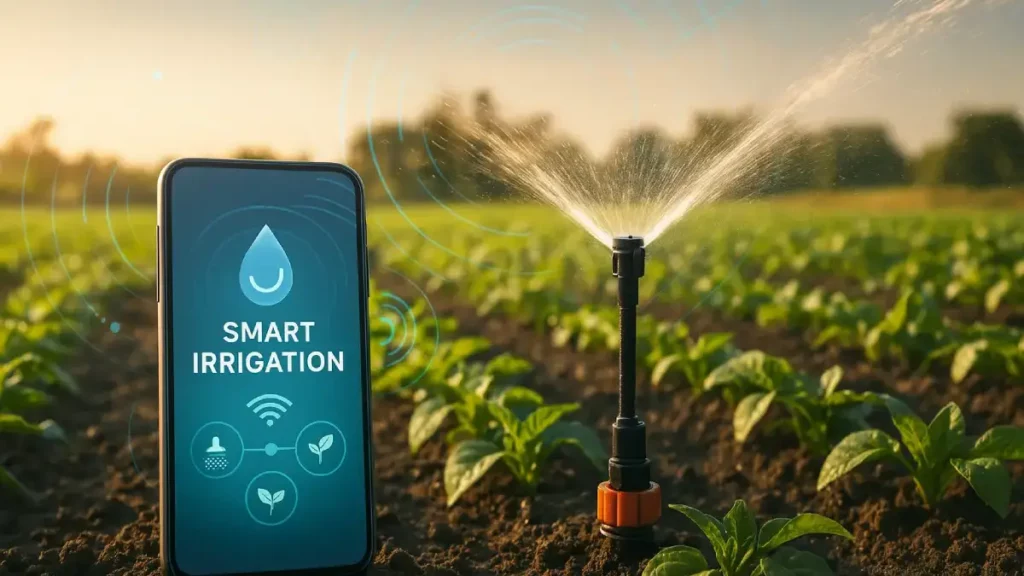
Table of Contents
- Introduction
- The Problem with Traditional Irrigation: Understanding Water Conservation Needs
- Components of Smart Irrigation Systems: The Building Blocks of Automated Watering
- How Smart Irrigation Systems Work: Processing Data with IoT and AI in Farming
- AI-Driven Innovations in Smart Irrigation: The Power of AI in Farming
- Benefits of Smart Irrigation Systems: More Than Just Saving Water
- Implementing Smart Irrigation: Steps for Farmers Considering Smart Agriculture
- Case Studies of Successful Implementation: Smart Irrigation Systems in Action
- Future of AI and IoT in Agriculture: Beyond Smart Irrigation
- Challenges and Limitations of Smart Agriculture Technology
- Conclusion: Embracing Smart Irrigation for a Sustainable Future
- Call to Action
- FAQ
Introduction
Welcome! Let’s talk about farming and water. Smart irrigation systems are a new kind of technology that helps farmers water their crops in a really smart way. Think of them as clever helpers that use sensors, computer controls, and data to give plants the exact amount of water they need, right when they need it.
These advanced water management systems are changing the game for modern farming. They allow for very precise watering, which means less water is wasted. This is super important for water conservation and helps make farming better for the planet, which we call sustainable agriculture. By managing water intelligently, we can protect this precious resource. Many innovations in sustainable tech are helping build a greener future.
“Imagine giving plants the perfect drink, exactly when they’re thirsty, without wasting a drop. That’s the promise of smart irrigation.”
More and more, farmers are using tools like the Internet of Things (IoT) and Artificial Intelligence (AI) on their farms. These technologies help tackle big problems like water shortages around the world. For those interested in smart solutions in general, exploring guides to smart living can offer broader context. By using smart irrigation systems, farming can become more efficient and earth-friendly.
The Problem with Traditional Irrigation: Understanding Water Conservation Needs
For a long time, farmers have watered their fields using older methods. These traditional ways often use much more water than needed, leading to significant waste. This is a big problem for water conservation.
Studies show that older methods like surface irrigation can waste about half (50%) of the water used. This water is lost through evaporation (turning into vapor and floating away), runoff (water flowing off the field), and simply putting too much water on the crops.
“Traditional irrigation often means guessing how much water crops need, leading to massive waste and inefficiency.”
Another issue is using fixed watering schedules. Imagine watering your garden every Tuesday at 10 AM, no matter if it just rained or if it’s extra hot. Traditional systems often work like this. They don’t adapt to changing weather like rain or high temperatures, or pay attention to what the plants actually need at different growth stages.
These old methods also require a lot of manual work. Farmers or workers have to physically turn water on and off. This takes time and effort, and sometimes mistakes happen, leading to either too much or too little water for the crops.
All this inefficiency means more than just wasted water. It leads to higher costs for farmers (water bills, labor costs), and it can harm the environment. Excess water running off fields can carry away soil and fertilizers, polluting rivers and streams.
As our climate changes and water becomes scarcer in many places, these old, wasteful practices are not sustainable. We need better ways to manage water in farming to ensure we can grow food for everyone without harming our planet. This makes the shift towards sustainable agriculture practices essential.
Components of Smart Irrigation Systems: The Building Blocks of Automated Watering
So, what makes smart irrigation systems so smart? They are made up of several key parts, both hardware (physical things) and software (computer programs), that work together. Understanding these components helps us see how IoT enables automated watering. For those interested in applying IoT to home gardening, similar principles are at play.
Hardware Components:
- Soil Moisture Sensors: These are like little probes stuck in the ground at different spots and depths. They measure how much water is actually in the soil where the plant roots are. This tells the system if the plants are thirsty.
- Weather Stations: Usually placed on or near the farm, these collect real-time local weather information. They measure things like temperature, how humid the air is, how much rain has fallen, and how windy it is. This helps predict how much water crops will need.
- Flow Meters and Pressure Sensors: These devices are installed in the irrigation pipes. Flow meters measure exactly how much water is flowing through the system. Pressure sensors check if the water pressure is correct. This helps ensure the system is working properly and spots leaks.
- Automated Valves and Controllers: These are the “hands” of the system. The controller is the brain that receives all the data. Based on the analysis, it sends commands to the automated valves. These valves then open or close automatically to start or stop the flow of water to different parts of the field.
Software Components:
- Cloud-Based Platforms: This is where all the data collected by the sensors and weather stations is sent and stored, usually over the internet. Powerful computers in the cloud process this information. Farmers can access this platform from anywhere.
- Mobile Applications (Apps): Farmers often use apps on their smartphones or tablets. These apps let them see the data, check the system’s status, and even manually control the irrigation from far away.
- AI Algorithms: This is the “super smart” part. Artificial Intelligence (AI) programs analyze all the collected data (soil moisture, weather forecasts, crop type, etc.). They figure out the best watering schedule – exactly when to water, for how long, and how much water to use for different zones in the field.
“Think of it as a coordinated team: sensors are the eyes and ears, the controller is the brain (powered by AI), and the valves are the hands, all working together seamlessly.”
All these hardware and software parts are connected, often wirelessly using IoT technology. They form an integrated system where sensors collect data, the data is sent to the cloud, AI analyzes it, and the controllers execute the watering plan precisely. This seamless automated watering process makes smart irrigation systems incredibly efficient.
How Smart Irrigation Systems Work: Processing Data with IoT and AI in Farming
Now that we know the parts, let’s see how smart irrigation systems actually work together. It’s a cycle of collecting information, thinking about it, and then acting on it, all powered by IoT and AI in farming to achieve smart agriculture through automated watering.
1. Collecting Data:
It all starts with sensors spread across the fields. These IoT devices, like soil moisture probes and local weather stations, are constantly gathering information. They measure things like how wet the soil is deep down, the air temperature, humidity, rainfall, and sunshine. This gives a detailed picture of the conditions right there in the field.
2. Adding Weather Forecasts:
The system doesn’t just look at current weather; it also pulls in weather forecasts from reliable sources. This helps it plan ahead. For example, if heavy rain is predicted tomorrow, the system might decide to skip watering today. It also looks at past weather patterns to understand the local climate better.
3. Sending the Data:
All the information gathered by the sensors and from weather forecasts needs to go somewhere to be analyzed. This data is usually sent wirelessly using different communication methods (like Wi-Fi, cellular networks, or special long-range networks like LoRaWAN) to a central computer system, often in the cloud.
4. Analyzing with AI:
This is where the “smart” part really happens. Powerful AI in farming algorithms take all this data – current soil moisture, weather conditions, forecasts, historical data, information about the specific crop being grown, and its growth stage – and analyze it. The AI figures out:
- Exactly how much water is currently available to the plants in the soil.
- How much water the plants are likely to need soon, based on their size and the weather.
- The perfect time to water (e.g., early morning to reduce evaporation).
- The exact amount of water to apply to avoid waste and ensure plants get just enough.
5. Automatic Watering:
Based on the AI’s calculations, the central controller sends signals to the automated valves in the field. These valves open precisely when needed and release the exact amount of water calculated for each specific zone or section of the field. The flow meters help confirm the right amount was delivered. This automated watering happens without the farmer needing to manually turn anything on or off.
“It’s a continuous loop: Sense -> Send -> Analyze -> Act. AI turns raw data into intelligent watering decisions.”
This continuous cycle of data collection, transmission, AI analysis, and automated action makes smart agriculture possible, ensuring plants get optimal water while saving resources.
AI-Driven Innovations in Smart Irrigation: The Power of AI in Farming
Artificial Intelligence (AI) is making smart irrigation systems even smarter. AI in farming isn’t just about simple automation; it’s about learning, predicting, and making highly detailed decisions to improve smart agriculture.
Predicting Crop Water Needs with Machine Learning:
One of the most powerful AI tools used is machine learning. These are computer programs that can learn from data without being explicitly programmed for every scenario. In smart irrigation systems, machine learning models analyze huge amounts of information to predict exactly how much water a crop will need. They consider many factors all at once:
- Past watering patterns and how crops responded.
- Specific water needs for different crop types (corn needs different water than tomatoes).
- The current growth stage of the plants (young seedlings need less water than mature plants).
- The type of soil and how well it holds water.
- Up-to-the-minute weather forecasts and historical climate data.
By constantly learning from new data, these models become incredibly accurate at predicting water needs, preventing both under-watering and over-watering.
Big Savings and Better Yields:
The results of using AI are impressive. Studies and real-world examples show that AI-powered smart irrigation systems can be highly effective. Some systems have been shown to reduce water usage by as much as 50% compared to old methods. At the same time, by giving plants exactly what they need, these systems can help increase the amount of crops harvested (yield) by up to 30%. More crops with less water – that’s a huge win!
“AI doesn’t just automate; it learns and predicts, turning data into significant water savings and impressive yield increases.”
Seeing Plant Problems with Computer Vision:
AI can also “see.” Using cameras mounted on drones or ground equipment, computer vision (a type of AI that understands images) can analyze pictures of the crops. It can detect early signs of plant stress caused by lack of water, disease, or pests, sometimes even before a human eye could notice. This allows farmers to react quickly and fix problems in specific areas.
Planning for Drought with Predictive Analytics:
AI is great at looking ahead. By analyzing long-term weather forecasts and historical drought patterns, AI can help farmers plan their irrigation strategies for potentially dry periods. This predictive analytics helps manage water resources more effectively, especially in regions prone to drought.
Watering Different Zones:
Fields are rarely uniform. Some areas might have different soil types, slopes, or get more sun than others. AI enables zone-based irrigation. The system divides the field into smaller management zones. Based on data from sensors in each zone, AI directs the system to apply different amounts of water to each zone according to its specific needs. This level of precision is a key feature of advanced smart agriculture.
These AI-driven innovations are constantly evolving, making smart irrigation systems more powerful tools for efficient and productive farming.
Benefits of Smart Irrigation Systems: More Than Just Saving Water
Adopting smart irrigation systems brings a wide range of advantages for farmers, the environment, and our food supply. These benefits go far beyond simple water conservation, touching on crop quality, costs, and overall sustainable agriculture.
1. Significant Water Conservation:
This is often the biggest driver. By applying water precisely when and where it’s needed, smart irrigation systems dramatically cut down on waste. Compared to traditional methods like flood irrigation or basic sprinklers, smart systems can reduce water usage by anywhere from 20% to 60%. That’s a huge saving!
Saving this much water helps preserve precious groundwater resources, which are like underground lakes that many communities rely on. It also reduces the strain on rivers and reservoirs, especially during dry times. This level of water conservation is critical for long-term water security.
2. Better Crop Quality and Higher Yields:
Plants need just the right amount of water to grow strong and healthy. Smart irrigation systems excel at maintaining the perfect soil moisture level throughout the plant’s life cycle.
- Optimal Growth: Consistent, adequate water helps plants develop better roots, stronger stems, and produce more fruit or grain.
- Reduced Disease: Over-watering can lead to soggy soil, which encourages fungal diseases and root rot. Precise watering keeps the soil healthy and reduces these risks.
- Less Nutrient Loss: When too much water flows through the soil, it can wash away important nutrients (like fertilizer) that plants need. Smart systems minimize this leaching, keeping nutrients in the root zone.
The result is often healthier plants, better quality produce (like tastier fruit or bigger vegetables), and significantly higher yields per acre.
“Healthier plants, better harvests, less waste – smart irrigation delivers a trifecta of agricultural improvements.”
3. Economic Advantages for Farmers:
While there’s an upfront cost, smart irrigation pays back in several ways:
- Lower Water Bills: Using less water directly translates to lower water costs, where applicable. One example often cited is the Tallyn’s Reach Authority, which reportedly saved $300,000 annually using smart irrigation technology. (Note: Specific source link for Tallyn’s Reach claim unavailable in provided text)
- Reduced Labor Costs: Automation handles the watering process, freeing up farmers and workers for other important tasks. Less time spent manually managing irrigation means lower labor expenses.
- Energy Savings: Irrigation pumps use a lot of electricity. By running pumps only when necessary and often for shorter durations, smart systems reduce energy consumption. Optimized pressure management can also make pumps run more efficiently. To further improve efficiency and save money in other areas, exploring smart thermostats can provide useful insights, even if applied in a different setting.
- Return on Investment (ROI): Farmers often see a return on their investment within a few years, depending on the farm size, crops grown, and local water/energy costs. The savings and increased yields eventually outweigh the initial setup costs.
4. Environmental Sustainability:
This ties everything together. By using resources more wisely, smart irrigation systems contribute significantly to sustainable agriculture:
- Less Water Taken: Reduced water withdrawal means more water stays in rivers, lakes, and aquifers for nature and other uses.
- Lower Carbon Footprint: Using less energy for pumping reduces greenhouse gas emissions associated with electricity generation.
- Cleaner Waterways: Precise water application minimizes runoff, which means less soil erosion and less fertilizer or pesticide pollution entering nearby water bodies.
Overall, smart irrigation systems offer a powerful combination of environmental responsibility and economic sense, making them a key technology for the future of farming.
Implementing Smart Irrigation: Steps for Farmers Considering Smart Agriculture
Switching to smart agriculture technologies like smart irrigation involves careful planning and execution. Here’s a step-by-step guide for farmers looking to implement automated watering systems using IoT. For homeowners interested in efficiency, a DIY home energy audit can be a beneficial first step to understand energy usage and savings, mirroring the assessment farmers need to conduct for their irrigation systems.
1. Assessment Phase: Know Your Farm
- Evaluate Current System: Look at your existing irrigation setup (pipes, pumps, sprinklers/drip lines). What works? What doesn’t? What can be reused or needs upgrading?
- Analyze Your Soil: Different soil types hold water differently. Get detailed soil tests done across your fields to understand texture (sandy, clay, loam) and water-holding capacity. This is crucial for sensor placement and system programming.
- Check Your Water Source: How much water do you have access to (well capacity, water rights, reservoir levels)? What is the water quality? This impacts system design and scheduling.
- Define Challenges and Goals: What are your biggest problems now (e.g., high water bills, dry spots, low yields)? What do you want to achieve (e.g., save 30% water, increase yield by 15%, reduce labor)? Clear goals guide technology choices.
2. Technology Selection: Choose the Right Tools
- Sensors: Choose soil moisture sensors appropriate for your soil type and crop root depth. Consider weather stations – do you need a full on-farm station or can you use reliable local weather data services?
- Controllers: Select a controller (the system’s brain) that can handle the number of zones you need, is compatible with your chosen sensors and valves, and offers the AI features you want. Consider ease of use.
- Connectivity: How will the system components talk to each other and send data? Options include Wi-Fi (needs good coverage), cellular (requires a data plan), or specialized IoT networks like LoRaWAN (long-range, low-power). Choose based on your farm’s location and infrastructure.
3. System Integration: Putting It All Together
- Installation: Properly install sensors at representative locations and depths. Install automated valves, connect flow meters, and wire everything to the controller(s). This might require professional help.
- Software Setup: Configure the controller and the cloud platform or mobile app. Input farm details, field layouts, crop types, soil data, and initial watering parameters.
- Calibration: Ensure sensors are reading accurately and the system is delivering the expected amount of water. Fine-tune initial settings based on observations.
“Successful implementation isn’t just about buying tech; it’s about understanding your farm, choosing the right tools, and setting them up correctly.”
4. Operation and Management: Running the System
- Staff Training: Train yourself and any staff involved on how to monitor the system using the app or platform, understand alerts, perform basic troubleshooting, and manually override if needed.
- Maintenance: Schedule regular checks. Clean sensors, inspect valves and filters, check for leaks, ensure batteries (if used) are good, and update software when needed.
- Data Analysis: Regularly review the data on water usage, soil moisture trends, and crop performance. Use this information to adjust settings and optimize the AI’s performance for even better results. Smart agriculture involves learning from data.
5. ROI Tracking: Measure Your Success
- Measure Water Savings: Compare water bills or usage logs before and after implementation. Use flow meter data for precise tracking.
- Track Yield Improvement: Monitor crop yields and quality. Compare harvest data from previous years or from similar fields without smart irrigation.
- Document Cost Reductions: Keep records of lower labor hours spent on irrigation, reduced energy bills, and potentially lower fertilizer costs (due to less leaching).
Following these steps can help ensure a smooth transition to automated watering and maximize the benefits of smart agriculture.
Case Studies of Successful Implementation: Smart Irrigation Systems in Action
Seeing how others have used smart irrigation systems can be inspiring. While specific farm names may vary, here are examples illustrating successful adoption across different scales, highlighting benefits for sustainable agriculture and water conservation.
Case Study 1: Large-Scale Row Crop Farm (e.g., Corn or Soybeans)
- Scenario: A large farm (thousands of acres) growing corn previously used center-pivot irrigation systems running on fixed timers or basic sensors.
- Technology: They implemented a comprehensive smart irrigation system integrating soil moisture sensors every few acres, on-farm weather stations, and AI-driven scheduling linked to variable rate irrigation (VRI) technology on their pivots. VRI allows different parts of the pivot’s circle to receive different amounts of water.
- Results: The farm reported a 25% reduction in water use and a 15% decrease in energy consumption for pumping. Yields saw a modest but consistent increase of 5-8% due to reduced water stress and better nutrient availability.
- Challenges & Solutions: Addressed initial cost and integration with existing pivots via grants and expert help. Tackled connectivity with a LoRaWAN network.
Case Study 2: Specialty Crop Grower (e.g., Berries or Wine Grapes)
- Scenario: A medium-sized farm growing high-value strawberries, previously using manual drip irrigation. Quality was key.
- Technology: Adopted precision drip irrigation controlled by an AI platform, using numerous soil sensors, flow meters, and hyper-local weather data. AI optimized timing and frequency (pulse irrigation).
- Results: Water usage dropped by 40%. Fruit quality (size, sugar content) improved significantly, leading to better prices and reduced loss. ROI achieved within three seasons.
- Challenges & Solutions: Ensured sensor accuracy via calibration and zone definition. Farmer invested time learning the platform for fine-tuning.
“From vast cornfields to delicate strawberry patches, smart irrigation proves its value across diverse farming scales and types.”
Case Study 3: Small Diversified Farm Adoption
- Scenario: A small family farm (<50 acres) growing mixed vegetables struggled with inconsistent manual watering.
- Technology: Opted for a budget-friendly smart controller using weather service data and fewer, strategically placed soil sensors. Used a mobile app for control.
- Results: Achieved around 20% water savings and significantly reduced irrigation labor time. Crop quality improved, boosting local market sales. Plans to scale up.
- Challenges & Solutions: Managed upfront cost by starting small and scaling. Benefited from online resources and farmer forums.
These examples show that smart irrigation systems offer scalable solutions that benefit farms of all sizes, driving water conservation and supporting sustainable agriculture.
Future of AI and IoT in Agriculture: Beyond Smart Irrigation
The integration of IoT and AI in farming is just beginning. The future holds even more exciting possibilities for smart agriculture, pushing beyond current smart irrigation systems towards more connected, intelligent, and sustainable agriculture practices. For example, eco-friendly gadgets are constantly innovating and might influence agricultural tech too in the future.
Edge Computing for Faster Action:
Currently, much data analysis happens in the cloud. Edge computing means doing more processing right on the farm, perhaps even at the sensor or controller level. This reduces delays (latency) and improves reliability, especially with poor internet.
Drones and Satellites Join the Team:
IoT is taking to the skies.
- Aerial Monitoring: Drones and satellites provide rapid, large-scale views of crop health and water distribution.
- Multispectral Imaging: Special cameras detect plant stress (water, disease, nutrient issues) before it’s visible to the human eye.
- Complementary Data: Aerial data enhances ground sensor data for even more precise AI in farming analysis and smart agriculture actions.
“The future farm is hyper-connected – from sensors in the soil to eyes in the sky, all feeding data to smarter AI for ultimate efficiency.”
Smarter AI, Smarter Farms:
Future AI in farming will be even more powerful:
- Improved Learning: Faster adaptation to specific farm conditions and climates.
- Predictive Power: Better forecasting of water needs, pest outbreaks, disease, and weather impacts.
- Autonomous Systems: Potential for systems that monitor, analyze, and act (irrigate, fertilize, weed) with minimal human input.
Adapting to Climate Change:
Sustainable agriculture must be climate-resilient. Smart systems are crucial:
- Drought Resilience: Optimizing water use during shortages, guided by predictive analytics.
- Adapting Practices: Helping farmers quickly adjust irrigation and management as weather patterns shift.
The continued development of IoT and AI in farming promises a future where smart agriculture is not just about efficiency, but also about resilience, environmental stewardship, and ensuring a stable food supply for a growing world.
Challenges and Limitations of Smart Agriculture Technology
While the benefits of smart agriculture technologies like smart irrigation systems are clear, farmers face some hurdles in adopting them. Understanding these challenges related to IoT integration and system costs is important.
1. Initial Investment Costs:
The upfront cost for hardware and software can be a significant barrier, especially for smaller farms.
- Solutions: Explore financing, government grants/subsidies for sustainable agriculture, or start small and scale up.
2. Technical Challenges:
- Connectivity: Patchy rural internet/cellular coverage hinders cloud-based IoT.
- Solutions: Use LoRaWAN or edge computing (local processing).
- Sensor Reliability: Harsh outdoor conditions require durable sensors and regular maintenance/calibration.
- Solutions: Choose quality sensors, follow maintenance schedules, consider redundancy.
- Integration Complexity: Making different brands work together can be tricky.
- Solutions: Work with experienced providers or choose interoperable systems.
“Technology adoption isn’t without bumps. Cost, connectivity, and the learning curve are real challenges farmers face.”
3. Adoption Barriers:
- Technical Skills Gap: Farmers/staff may need training to operate systems and interpret data.
- Solutions: User-friendly interfaces, good support, training programs, peer learning.
- Cultural Resistance: Hesitancy to trust technology over experience or discomfort with complex systems.
- Solutions: Demonstrate clear ROI, start simple, strong local support, showcase success stories.
Addressing these challenges through financial support, technological improvements, accessible training, and demonstrating clear value is crucial for wider adoption of smart irrigation systems and other smart agriculture advancements.
Conclusion: Embracing Smart Irrigation for a Sustainable Future
We’ve explored how smart irrigation systems, powered by Artificial Intelligence (AI) and the Internet of Things (IoT), are transforming agriculture. These advanced technologies offer a powerful solution to one of farming’s biggest challenges: using water wisely. The move toward sustainable tech overall mirrors this important change in agriculture.
Let’s quickly recap the major benefits:
- Significant Water Conservation: Drastically cuts water waste.
- Improved Crop Yields and Quality: Healthier growth, better harvests.
- Enhanced Sustainable Agriculture: Saves water/energy, reduces pollution.
- Economic Advantages: Lower costs, strong ROI for farmers.
AI in farming and IoT are practical tools revolutionizing traditional methods, enabling unprecedented precision and efficiency for smart agriculture.
“Smart irrigation isn’t just about technology; it’s about securing our food future sustainably.”
For farmers considering the future, exploring smart irrigation systems is vital. Assessing practices and investigating implementation can unlock significant benefits.
Looking ahead, technologies like smart irrigation systems will be essential for building resilient agricultural systems capable of feeding a growing population while protecting our planet’s resources. Embracing these innovations is key to achieving truly sustainable agriculture.
Call to Action
Are you interested in learning more about how smart irrigation systems could benefit your farm?
- Assess Your Needs: Evaluate your current irrigation practices, inefficiencies, and goals for water conservation or yield improvement.
- Research Options: Explore different smart irrigation providers and technologies suitable for your farm specifics.
- Seek Expertise: Contact local agricultural extension offices, specialists, or tech providers for tailored advice.
- Look for Support: Investigate grants or cost-sharing programs focused on sustainable agriculture and water management.
Taking the first step towards smarter water management can lead to long-term benefits. Explore the possibilities of smart irrigation systems today!
FAQ
Q: What are the main components of a smart irrigation system?
A: Key components typically include soil moisture sensors, weather stations (or access to weather data), automated valves, controllers (the system’s brain, often cloud-connected), and software/apps with AI algorithms for analysis and scheduling.
Q: How much water can smart irrigation really save?
A: Savings vary depending on the previous system, climate, crop, and specific technology used, but reductions of 20% to 60% compared to traditional methods are commonly reported.
Q: Is smart irrigation only for large farms?
A: No. While large farms can see significant benefits, scalable and more budget-friendly options are available, making smart irrigation viable and beneficial for small and medium-sized farms as well.
Q: What are the biggest challenges to adopting this technology?
A: The main hurdles often include the initial investment cost, potential technical issues like rural internet connectivity, the need for sensor maintenance, and the learning curve for farmers and staff to effectively use the system.
Diminished Value Claim: Your Complete Guide to Recovering Lost Vehicle Value
Estimated reading time: 9 minutes
Key Takeaways
- Understand Diminished Value Even after perfect repairs, a car accident can significantly reduce your vehicle’s market value due to its accident history.
- [State] Specifics: Familiarize yourself with [state]’s regulations regarding diminished value claims to ensure you meet the eligibility criteria and maximize your potential compensation.
- Documentation is Key: Gather all necessary documents, including police reports, repair invoices, and a professional appraisal, to build a strong case for your diminished value claim.
Navigate to What Matters
![diminished value claim [state]](https://nowee.org/wp-content/uploads/2025/09/image_0-1-1.webp)
Introduction to Diminished Value Claims in [State]
A diminished value claim [state] is a legal request for compensation that addresses the reduction in your vehicle’s market value after an accident, even when repairs have been completed perfectly.
This value reduction happens because accident history appears on vehicle reports like Carfax, making potential buyers hesitant or unwilling to pay full market price.
In [state], specific regulations govern how these claims work, who qualifies, and how much compensation you might receive. Understanding these rules is crucial for successfully recovering your vehicle’s lost value.
Unlike some states with restrictive policies, [state] allows vehicle owners to pursue diminished value when another driver was at fault, giving you a pathway to financial recovery.
“A diminished value claim bridges the gap between repair costs and the actual financial loss incurred due to a vehicle’s accident history.”
Who Qualifies for a Diminished Value Claim in [State]?
Not everyone can file a diminished value claim [state]. Here’s a quick checklist to determine if you qualify:
- Not at fault: You must not be responsible for causing the accident
- Recent model vehicle: Newer cars typically qualify more easily than older ones
- Good condition: Your car should have been well-maintained before the accident
- Documented accident: You need a police report or insurance claim documentation
- Within time limits: [State] allows claims within [X] years of the accident
Your claim strength also depends on your vehicle’s characteristics. High-value, newer vehicles with low mileage typically receive higher diminished value assessments.
[State] requires specific documentation to support your claim, including proof the other driver was at fault and evidence of your vehicle’s pre-accident condition and value.
Pre-qualification self-assessment:
- Was another driver clearly at fault?
- Is your vehicle relatively new (less than 5-7 years old)?
- Do you have complete accident documentation?
- Are you within [state]’s statute of limitations?
If you answered “yes” to these questions, you likely have a valid diminished value claim [state].
Filing Process: Step-by-Step Guide
Filing a diminished value claim [state] requires careful preparation and documentation. Follow these steps for the best results:
- Gather documentation: Collect the police report, repair invoices, pre-accident maintenance records, and photographs of damage.
- Obtain a professional appraisal: Hire a certified appraiser familiar with [state] regulations to assess your vehicle’s diminished value.
- Prepare your claim letter: Use a diminished value sample letter template to formally request compensation from the at-fault driver’s insurance company.
- Submit your claim package: Send your letter, appraisal, and all supporting documentation to the appropriate insurance company.
- Follow up consistently: Contact the insurance adjuster every 1-2 weeks to check your claim status.
Your diminished value sample letter should include:
- Your contact information
- Vehicle details (make, model, year, VIN)
- Accident information and claim number
- Clear statement of diminished value amount
- Supporting documentation list
- Request for prompt response
Most insurance companies will initially resist or undervalue your claim. Stay persistent and rely on your professional appraisal to justify your request.
Timeline: How Long Do Diminished Value Claims Take?
Understanding how long diminished value claims take helps set realistic expectations. In [state], the typical timeline looks like this:
- Initial claim submission: 1-2 days
- Insurance acknowledgment: 1-2 weeks
- Claim investigation: 2-4 weeks
- Negotiation phase: 2-6 weeks
- Settlement and payment: 1-3 weeks
The total process usually takes between 6-12 weeks, though complex cases may extend longer.
Several factors can affect your timeline:
- Insurance company’s willingness to cooperate
- Quality and completeness of your documentation
- Whether you have professional representation
- Claim backlog at the insurance company
To speed up your claim:
- Submit complete documentation initially
- Use certified mail with return receipt
- Respond immediately to any requests for information
- Consider hiring an attorney for high-value claims or if facing significant delays
Having realistic expectations about how long diminished value claims take can reduce frustration during the process.
Calculating Your Vehicle’s Diminished Value
Accurately calculating your vehicle’s diminished value is crucial for fair compensation. You have several options:
- Online diminished value calculator: Many websites offer calculators that estimate diminished value based on your vehicle details, but results vary in accuracy.
- Professional appraisal: The most reliable method involves hiring a certified appraiser familiar with [state] claims.
- 17c Formula method: Some insurers use this calculation:
- Calculate 10% of your vehicle’s pre-accident value
- Apply damage multipliers (minor: 0.25, moderate: 0.50, severe: 0.75)
- Apply mileage multipliers (reducing value for higher mileage)
For example, a $30,000 vehicle with moderate damage might have a diminished value of $1,500 ($30,000 × 10% × 0.50).
Professional appraisals typically yield higher, more defensible values than calculator tools or insurer formulas. For vehicles worth over $20,000, the professional appraisal cost is usually worth the investment.
Remember, insurers often apply the 17c formula, which typically undervalues your loss. A professional appraisal provides stronger evidence for negotiation.
When to Consider Vehicle Replacement
Sometimes, filing a diminished value claim [state] might not be your best option. Consider these scenarios:
- Your calculated diminished value exceeds 40% of the repaired vehicle’s worth
- Repairs were extensive, affecting multiple major components
- Your vehicle’s make and model is particularly sensitive to accident history
- You were planning to sell your vehicle within the next 1-2 years
In these cases, you might benefit from a different approach:
- Review your total financial position, including:
- Repair costs already covered
- Potential diminished value recovery
- Current market value of your repaired vehicle
- Replacement costs for a similar vehicle
- Evaluate whether trading in or selling privately makes more sense financially.
- Consider whether keeping the vehicle long-term might offset the immediate value loss.
For [state] residents, some vehicle types retain value better after accidents. Research your specific make and model’s post-accident value retention before deciding.
[State] Success Story: Real Claim Example
A [state] resident recently succeeded with their diminished value claim after a significant accident. Here’s what happened:
John owned a 3-year-old luxury sedan valued at $45,000 before being rear-ended at a stoplight. After $12,000 in repairs, the vehicle looked perfect, but a professional appraisal determined it had lost $7,500 in market value.
The insurance company initially offered only $1,200 based on their internal formula. John submitted a formal diminished value claim [state] with:
- Professional appraisal documentation
- Comparable vehicle listings showing price differences
- A strongly-worded diminished value sample letter
- Evidence of [state]’s legal precedents for similar claims
After six weeks of negotiation, John received a $6,200 settlement – over 5 times the initial offer.
The key factors in his success were:
- Thorough documentation
- Professional appraisal from a certified expert
- Understanding of [state] regulations
- Persistence through multiple counteroffers
This case demonstrates how [state] residents can successfully navigate the diminished value claim process with the right approach.
Resources & Next Steps
Ready to pursue your diminished value claim [state]? Here are the resources you need:
- Download our free diminished value sample letter template customized for [state] regulations
- Access recommended diminished value calculator tools to estimate your potential recovery
- Find certified appraisers in [state] who specialize in diminished value claims
- Review [state] statute of limitations to ensure you file within the legal timeframe
Remember these important next steps:
- Document everything related to your accident and repairs
- Obtain a professional appraisal if your vehicle is valuable
- Submit your claim promptly to the at-fault driver’s insurance
- Follow up consistently until resolution
Don’t forget: [state] has a [X]-year deadline for filing diminished value claims. Acting quickly improves your chances of successful recovery. The diminished value claim [state] process can be challenging, but with proper documentation (DIY Home Energy Audit guide) [https://nowee.org/diy-home-energy-audit-guide] and persistence, you can recover the true financial impact of your accident.
Related reading:
- Learn how government policies impact electric vehicle adoption.
- Find the best time to sell your vehicle and maximize your profits.
- If you are looking to switch to EVs, demystify the charging process.
FAQ
Below are quick answers to common questions about this one-minute credit card guide.
What to Do If Your Car is Totaled [State]: A 48-Hour Checklist
What to Do If Your Car is Totaled: A 48-Hour Checklist
Estimated reading time: 8 minutes
Key Takeaways
- Immediate action is crucial: Document everything, contact your insurance company, and understand your coverage.
- ACV negotiation is key: Research comparable vehicles and challenge low settlement offers with solid evidence.
- Gap insurance can be a lifesaver: Understand your policy and prepare necessary documents to expedite claims.
![what to do if car is totaled [state]](https://nowee.org/wp-content/uploads/2025/09/image_0.webp)
Table of contents
- What to Do If Your Car is Totaled: A 48-Hour Checklist
- Key Takeaways
- Introduction
- Understanding Total Loss: The First 24 Hours
- Dealing with Insurance: The ACV Calculation
- Securing Transportation: Your Rental Car Options
- Financial Protection: Understanding Gap Insurance
- 7-Day Replacement Planner
- State-Specific Considerations
- Conclusion
- FAQ
Introduction
Having your car declared totaled after an accident can be overwhelming. The shock, combined with insurance terminology and financial concerns, leaves many wondering what to do if car is totaled in their state. This guide provides a comprehensive 48-hour action plan to protect your finances and get you back on the road quickly.
Whether you’re dealing with insurance adjusters, searching for a replacement vehicle, or trying to understand your state’s specific rules, this checklist will guide you through each critical step.
Understanding Total Loss: The First 24 Hours
When an insurance company declares your vehicle “totaled,” it means the cost to repair your car exceeds a certain percentage of its value. This percentage varies based on your state’s total loss threshold.
State Total Loss Threshold Variations
States typically use one of two methods to determine if a vehicle is totaled:
- Percentage threshold states – Set a specific percentage (ranging from 60% to 100%) of the vehicle’s Actual Cash Value (ACV)
- Total loss formula states – Compare the cost of repairs plus the salvage value to the pre-accident value
For example, Florida’s threshold is 80% of ACV, while Texas uses 100%. States like California and Georgia use the total loss formula instead of a fixed percentage.
Immediate Actions After Your Accident
- Document everything at the scene (photos, police report, witness information)
- Contact your insurance company immediately to report the accident
- Ask about rental car coverage and how long it lasts
- Request a copy of your policy to review coverage details
- Keep all receipts for towing, storage, and other related expenses
See this chart.
Dealing with Insurance: The ACV Calculation
Insurance companies determine if your car is totaled by comparing the Actual Cash Value (ACV) versus repair cost. Understanding this calculation helps you ensure a fair settlement.
What Affects Your Vehicle’s ACV
Your car’s ACV is influenced by:
- Age and mileage
- Pre-accident condition
- Market value of comparable vehicles in your area
- Options and features
- Recent improvements or repairs
Insurance adjusters often use industry databases to determine your car’s value, but these valuations may not capture your vehicle’s true worth.
Tips for Challenging a Low ACV Offer
If you believe the offered settlement is too low:
- Research comparable vehicles for sale in your area
- Provide documentation of recent improvements or maintenance
- Consider hiring an independent appraiser (cost: $200-$500)
- Request the complete valuation report from your insurer
- Document unique features or low mileage that increase value
Remember to negotiate firmly but professionally, focusing on specific value factors rather than emotional attachment.
See this guide.
Securing Transportation: Your Rental Car Options
After your car is totaled, transportation becomes an immediate concern. Most insurance policies provide rental car after total loss coverage, but understanding the limitations is crucial.
Standard Rental Coverage Periods
Typical insurance policies offer:
- 3-7 days of rental coverage after a total loss determination
- Daily rate limits (often $30-$50 per day)
- Maximum total coverage amounts ($900-$1,500)
Your coverage ends when the insurance company makes a settlement offer, not when you receive the payment or purchase a new vehicle.
Extending Your Rental Coverage
Try these strategies to maximize your rental period:
- Request an extension due to reasonable delays in the settlement process
- Ask if your policy has any rental extensions for total loss situations
- Consider negotiating the extension as part of your settlement
- Look into discounted long-term rates directly with rental companies
If rental coverage is insufficient, explore rideshare services, public transportation, or borrowing a vehicle from friends or family while finalizing your settlement.
Read about total loss threshold by state.
Financial Protection: Understanding Gap Insurance
If you financed or leased your totaled vehicle, gap insurance can be a financial lifesaver. This coverage pays the difference between what you owe on your loan and the car’s ACV.
Gap Insurance Refund Timeline and Process
After a total loss, you may be entitled to a refund for the unused portion of your gap insurance. Here’s what to expect:
- Most gap insurance refunds process within 15-30 days after claim approval
- You’ll need to cancel the policy after the claim is settled
- Refunds are typically prorated based on the unused term
Required Documents for Gap Claims
Prepare these documents to expedite your gap claim:
- Original purchase agreement
- Gap insurance policy documents
- Payoff statement from your lender
- Insurance settlement documentation
- Proof of payment for the gap policy
- Total loss valuation from your insurer
Preventing Gap Claim Delays
Common reasons for delayed gap claims include:
- Missing or incomplete documentation
- Disputes over the vehicle’s value
- Communication delays between the insurer and lender
- Incorrect payoff information
Stay proactive by following up regularly with both your gap provider and auto insurer.
Learn about total loss threshold by state.
7-Day Replacement Planner
With your settlement amount determined, it’s time to find a replacement vehicle. This 7-day planner helps you make informed decisions without rushing.
Day 1-2: Research Vehicles Within ACV Budget
- Determine your budget (settlement amount plus any additional funds)
- Research reliable models within your price range
- Check safety ratings and reliability scores
- Consider fuel efficiency and maintenance costs
- Create a shortlist of 3-5 potential vehicles
Day 3-4: Secure Financing Options
- Contact your bank or credit union for pre-approval
- Compare interest rates from multiple lenders
- Calculate monthly payments based on different loan terms
- Consider how down payment size affects your loan
- Check your credit report for any errors that could affect rates
Day 5-7: Test Drive and Finalize Purchase
- Schedule test drives for your top choices
- Bring a checklist of features important to you
- Request vehicle history reports for used cars
- Use your insurance settlement as leverage in negotiations
- Consider certified pre-owned options for extended warranty coverage
Remember that dealers are often more willing to negotiate when they know you have cash from an insurance settlement.
State-Specific Considerations
Your state’s total loss threshold significantly impacts how quickly your vehicle may be declared totaled and what happens afterward.
State-Specific Threshold Variations
Some notable state variations include:
- Colorado: 100% threshold (most conservative)
- Oklahoma: 60% threshold (most liberal)
- Texas: 100% threshold
- Florida: 80% threshold
- Pennsylvania, California, and others: Total loss formula
State Laws Affecting Settlements
Beyond thresholds, states differ in:
- How quickly insurers must inspect damaged vehicles
- Mandatory timeframes for settlement offers
- Whether you can keep your totaled vehicle (salvage retention)
- Depreciation calculations allowed by insurers
Salvage Title Requirements
If you decide to keep your totaled vehicle:
- Most states require a salvage title for totaled vehicles
- Rebuilding requires inspection and certification
- Insurance may be more difficult or expensive to obtain
- Resale value will be significantly lower
Check with your state’s DMV for specific salvage title regulations and requirements.
See this guide.
Conclusion
When dealing with what to do if car is totaled, following this 48-hour checklist can significantly reduce stress and financial impact. From understanding your state’s total loss threshold to securing proper transportation and navigating the insurance claim process, each step is critical.
Remember that being proactive and informed throughout the process gives you the best chance at a fair settlement and smooth transition to your replacement vehicle. Keep this guide bookmarked for reference and share it with friends or family members who find themselves facing a total loss situation.
If you’re looking for inspiration, this article offers advice (see A Practical Guide to Building an Efficient, Secure, and AI-Powered Home).
Consider these points when securing financing options (see Lease Buyout Calculator: Decide if Buying, Selling, or Returning is Your Best Option).
Want to know what to do with Salvage Title Requirements (Salvage Title Requirements).
A step-by-step process on how to sell a car with a lien (see How to Sell a Car with a Loan: A Step-by-Step Guide to Lien Payoff & Title Transfer).
Explore sustainable tech innovations for a greener future (see Sustainable Tech: Innovations Shaping a Greener Future).
FAQ
Q: What is Actual Cash Value (ACV)?
A: The ACV is the fair market value of your vehicle immediately before the accident, taking into account depreciation, mileage, and condition.
Q: What if I still owe more than the car is worth?
A: This is where gap insurance becomes important. Gap insurance covers the difference between your loan balance and the ACV, preventing you from owing money on a car you no longer have.
Prepare for Amazement: The World of De extinct Animals is Here!
Journey to the Past: Get Ready for De extinct Animals!
Estimated reading time: 6 minutes
Key Takeaways
- De-extinction science aims to bring back extinct species using advanced genetic techniques.
- Methods include DNA extraction from ancient remains, genome sequencing, cloning, genome editing (like CRISPR), and back-breeding.
- Potential benefits involve restoring ecosystems, possibly helping fight climate change, and advancing conservation tools for currently endangered species.
- Key species being considered include the Woolly Mammoth, Passenger Pigeon, and Aurochs.
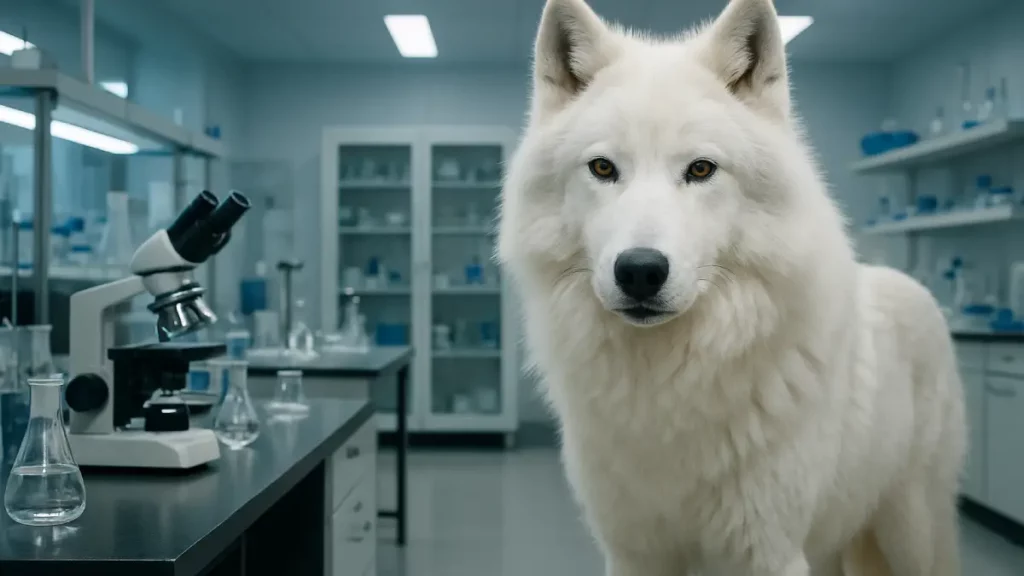
Table of contents
Prepare for Amazement: The World of De extinct Animals is Here!
Have you ever wished you could see a real woolly mammoth? Or watch flocks of passenger pigeons fill the sky again? It sounds like something out of a science fiction movie, but guess what? Scientists are actually working on making this happen! Welcome to the incredible world of de extinct animals, a field buzzing with excitement and discovery. This week, the hottest news is all about bringing animals back from the past, and we’re here to give you the inside scoop.
Imagine walking through a park and seeing creatures that haven’t walked the Earth in hundreds, or even thousands, of years!
That’s the dream driving de extinct animals research. It’s a super exciting area of science, also called resurrection biology, where brilliant minds are using amazing tools to try and bring extinct species back to life, or at least create animals that look and act very much like them. It’s like real-life time travel, but with science!
So, how exactly do scientists plan to achieve this amazing feat? And which incredible creatures might we see again? Grab your explorer hat, because we’re diving deep into the science, the animals, and the potential future shaped by de-extinction!
What’s the Secret Sauce? How De-Extinction Works
Bringing back extinct animals isn’t as simple as waving a magic wand. It involves some seriously cool science, like solving a giant puzzle using clues left behind by animals from long ago. De-extinction relies on big steps forward in understanding DNA (the instruction manual for life), cloning (making copies), editing those instructions, and careful breeding. Here’s a step-by-step look at how scientists are tackling this mind-blowing challenge:
Finding the Ancient Clues (DNA Extraction)
First, scientists need the instruction manual – the DNA – of the extinct animal. They carefully search for this precious material in old remains, like bones dug up from the ground, feathers preserved in museums, or even entire animals frozen in ice for thousands of years (like mammoths!). The challenge is that DNA gets old and crumbly over time, like an ancient treasure map. The older the sample, the more broken the DNA might be, making it harder to read.
Putting the Puzzle Together (Genome Sequencing and Editing)
Once scientists have some DNA, they use special machines to read its code, called sequencing. This gives them the animal’s genome – its complete set of instructions. But often, parts of the map are missing or torn. So, scientists cleverly use the genome maps of the extinct animal’s closest living relatives (like using an elephant’s map to help fix a mammoth’s map) to figure out the missing pieces and stitch the instructions back together.
- Making the Animal Magic Happen (Cloning or Genome Editing)
Okay, now scientists have the instruction manual. How do they make the animal? There are a couple of super-smart ways:- Cloning: Think of it like making a copy. Scientists take the complete DNA instruction manual from the extinct animal and carefully place it inside an egg cell from a closely related living animal. They first remove the original instructions from the egg cell so it only has the extinct animal’s DNA. If all goes well, this egg can grow into a baby animal!
- Genome Editing: This is like being a super-precise editor for the book of life. Scientists use tools like CRISPR (it works like tiny scissors and glue for DNA!) to change the DNA instructions of a living relative. They ‘edit’ the relative’s DNA to include important bits of the extinct animal’s instructions – like adding the instructions for woolly fur and thick fat to an elephant’s DNA to make it more mammoth-like. This creates a hybrid – an animal that’s a mix, but looks and maybe acts like the extinct one.
Breeding Backwards (Back-Breeding)
Sometimes, the special features of an extinct animal still exist, scattered among its living relatives. Take the Aurochs, the giant wild cattle that lived long ago. Some modern cows still have bits of Aurochs DNA and features. Scientists can carefully choose cows that look most like Aurochs and breed them together over many generations. The goal is to gather all those ancient features back into one animal, creating a modern creature that looks and lives very much like the extinct Aurochs.
Welcome to the World! (Rearing and Reintroduction)
Making the baby animal is just the start! Once a mammoth-like calf or a dodo chick is born, it needs to be raised carefully. The ultimate dream is to have enough of these animals to release them back into the wild, into places where they used to live or similar areas where they can thrive and help the environment.
Why Bring Back De extinct Animals? The Exciting Possibilities!
Okay, bringing back lost animals is super cool, but are there other reasons scientists are working so hard on this? You bet! De-extinction isn’t just about seeing amazing creatures again; it could have some massive positive impacts:
Healing Nature (Restoring Ecosystems): Every animal has a job in its environment. When a species disappears, its habitat can suffer. Bringing back key animals, called “keystone species,” could help fix broken ecosystems. For example, mammoth-like animals could turn tundra back into grassland, and Passenger Pigeons could help forests grow by spreading seeds. It’s about making nature healthier and stronger.
Fighting Climate Change: Believe it or not, some de-extinct animals might help us fight climate change! The Woolly Mammoth is the star example here. By trampling snow and encouraging grasslands, they could help keep the Arctic ground (permafrost) frozen, preventing the release of greenhouse gases trapped inside.
Could ancient giants help solve modern problems? The potential connection between mammoths and climate change mitigation is a fascinating area of research!
Supercharging Science (Advancing Conservation): The amazing science being developed for de-extinction – like advanced genetic engineering and cloning – isn’t just for bringing back the past. These tools can also be used to help animals that are endangered *right now*. Scientists could use these techniques to boost the health and numbers of struggling species by increasing their genetic diversity (the variety in their instruction manuals), making them stronger against diseases and changes in their environment.
The journey to bring back de extinct animals is one of the most exciting scientific adventures happening today. It blends incredible technology with a deep love for the natural world. Could we one day live in a world where the calls of Passenger Pigeons echo again, or where herds of mammoth-like creatures roam the Arctic? It’s a future that sparks the imagination!
Keep watching this space – the story of de-extinction is just beginning!
FAQ
Q: Will we see dinosaurs like in Jurassic Park?
A: Probably not. Dinosaur DNA is extremely old (tens of millions of years!) and likely too degraded to recover usable sequences, unlike the more ‘recent’ DNA from mammoths or passenger pigeons (thousands or hundreds of years old).
Q: Is a ‘de-extinct’ animal exactly the same as the original?
A: It depends on the method. Cloning could produce a very close genetic match if a complete, intact genome is available. Genome editing creates a hybrid – a modern animal edited to have key traits of the extinct one (like an elephant modified to be mammoth-like). Back-breeding aims to concentrate ancestral traits but results in a modern animal resembling the extinct one, not a perfect replica.
Q: Are there ethical concerns about de-extinction?
A: Yes, there are many discussions. Concerns include animal welfare (how will these animals adapt?), potential impacts on existing ecosystems if reintroduced, the high cost (could resources be better used for current conservation?), and the fundamental question of whether humans should ‘play God’ in this way.
Get Ready! The Future of Esports Tournaments & New Games Are Here!
The Future of Esports – Biggest Tournaments & New Games
Estimated reading time: 7 minutes
Key Takeaways
- 2025 marks a significant growth year for esports, featuring larger tournaments and emerging games alongside established titles.
- The Esports World Cup 2025 in Riyadh is set to be a landmark event with competitions across 25+ games and a historically large prize pool.
- Core esports games like League of Legends, Dota 2, and Counter-Strike 2 continue to dominate participation and viewership numbers.
- Valorant demonstrates rapid growth, supported by expanding franchised leagues, positioning it as a future top-tier esport.
- Mobile esports, exemplified by the PUBG Mobile World Cup, are becoming increasingly significant in the global competitive gaming landscape.

Table of contents
Introduction: Welcome to the Future!
Wow! Get ready for some super exciting news from the world of video games! Have you ever watched people play games online and compete against each other?
That’s called esports, and it’s getting bigger and bigger every single day! This year, 2025, is going to be HUGE for esports.
We’re talking about amazing new games, giant competitions with awesome prizes, and cool new ways to play and watch. Let’s dive into the future of esports – biggest tournaments & new games and see what amazing things are happening. Imagine giant stadiums filled with fans cheering for their favourite players, just like in football or basketball, but for video games!
We’ll explore the absolutely massive tournaments coming up, check out the games everyone is playing (and the new ones getting popular!), and peek into the super cool future trends that will change how we see gaming forever. Get strapped in, because the world of competitive gaming is rocketing forward!
Biggest Esports Tournaments in 2025
Okay, let’s talk about the biggest parties in esports – the tournaments! These are where the best players from all over the world come to show off their skills and win incredible prizes. And guess what? 2025 has some of the most gigantic tournaments we’ve ever seen!
First up, hold onto your controllers for the Esports World Cup 2025! This mega-event is happening in a place called Riyadh, in Saudi Arabia. It’s not just for one game; it’s like the Olympics of esports! They are planning to have competitions for 25 different games.
We’re talking about super popular games like League of Legends, Dota 2, Valorant, and even the mobile game sensation PUBG Mobile. What’s even crazier? They will even have Chess! And the prizes? Get this: they say it will have the biggest prize money ever given out in esports history! How cool is that?
“An esports Olympics with potentially the largest prize pool ever? 2025 is starting with a bang!”
Then there’s the legendary League of Legends World Championship. If you know esports, you know this one! It’s always one of the most watched events on the planet, with millions tuning in.
The company that makes League of Legends, Riot Games, is even changing things up in 2025, making the leagues different and adding new international tournaments to make it even more exciting. Imagine teams battling it out on huge stages with flashing lights and roaring crowds!
Fans of shooting games, listen up! Counter-Strike 2 is going to have a massive year. Big events like IEM Cologne, the ESL Pro League, and all the exciting BLAST competitions will be major highlights in 2025. The company behind the game, Valve, has made some changes to help these tournaments grow even bigger. Expect some super intense matches!
And we can’t forget about Dota 2! This game also has a huge following. Look out for awesome tournaments like DreamLeague Season 26 and the Dota 2 Masters Riyadh. Lots of people watch these, and tons of players try to compete.
But wait, there’s more! The Valorant Champions Tour (VCT), another game from Riot Games, keeps getting bigger and better, with more money being put into it and cool tournaments happening worldwide, showing continued growth.
Mobile gaming fans, the PUBG Mobile World Cup is a must-watch, showing just how popular gaming on phones has become. And of course, games like Call of Duty and Overwatch still have their huge finals – the Call of Duty League and Overwatch League Finals – which are always packed with action. Phew! So many amazing competitions to watch!
Popular and Emerging Esports Games
Okay, we know about the giant tournaments, but what about the games themselves? What are people playing and watching the most in 2025?
-

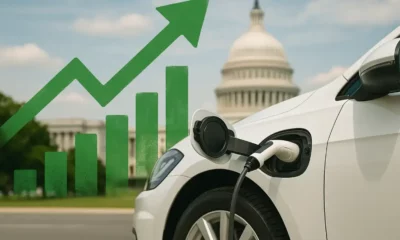

 Mobility9 months ago
Mobility9 months agoHow Government Policies Impact Electric Vehicle Adoption: A Comprehensive Analysis
-

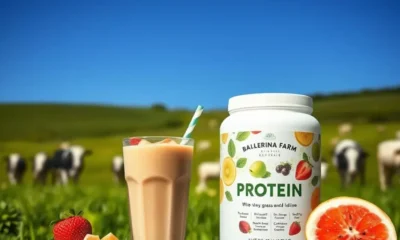

 Sustainability5 months ago
Sustainability5 months agoBallerina Farm Protein Powder: The Ultimate Farm-to-Shake Solution
-

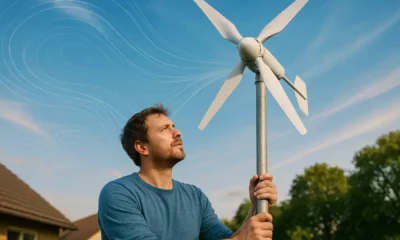

 Sustainability9 months ago
Sustainability9 months agoHome Wind Energy: The Complete Guide to Powering Your Green Home with Wind Turbines
-

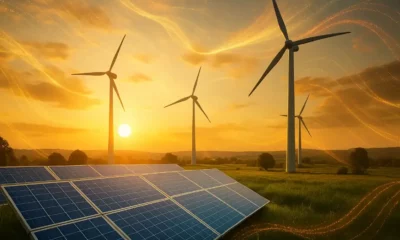

 Sustainability9 months ago
Sustainability9 months agoHarnessing Renewable Energy for a Sustainable Future: Powering Tomorrow’s World Today
-



 Technology8 months ago
Technology8 months agoGet Ready! The Future of Esports Tournaments & New Games Are Here!
-

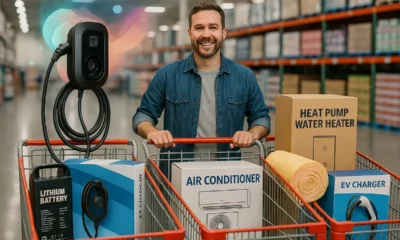

 Mobility9 months ago
Mobility9 months agoEV Charging 101: Costs, Home Stations, and How to Save with Rebates



![what to do if car is totaled [state]](https://nowee.org/wp-content/uploads/2025/09/image_0-80x80.webp)
![diminished value claim [state]](https://nowee.org/wp-content/uploads/2025/09/image_0-1-80x80.webp)



